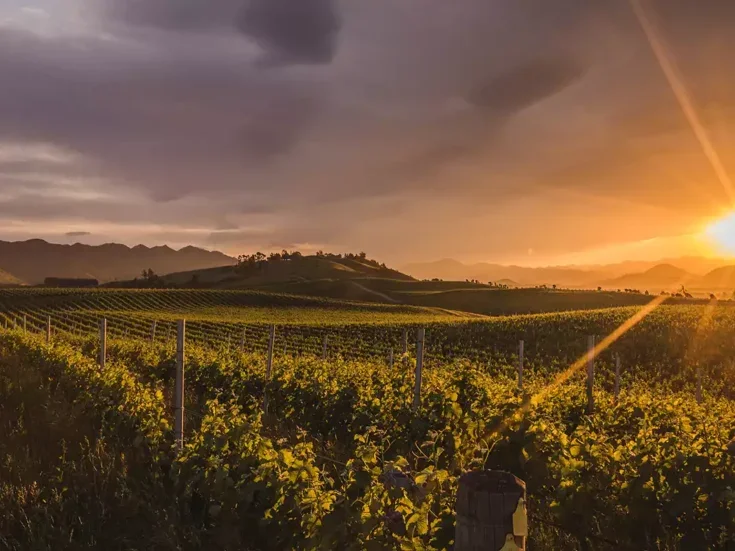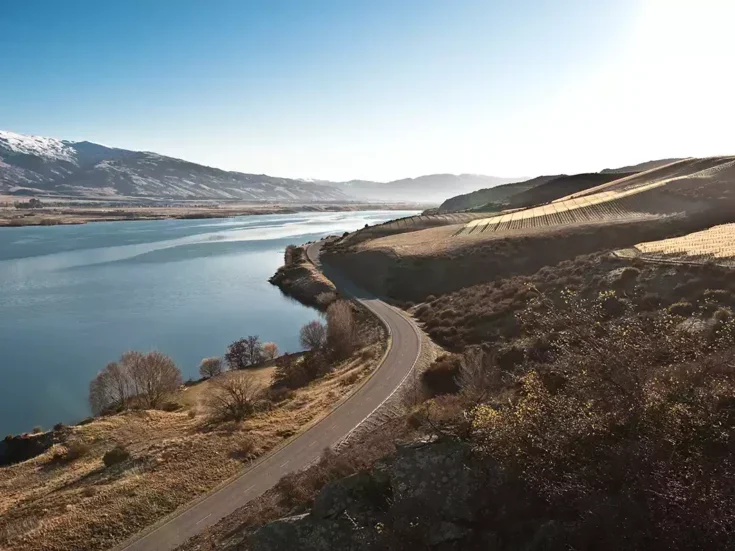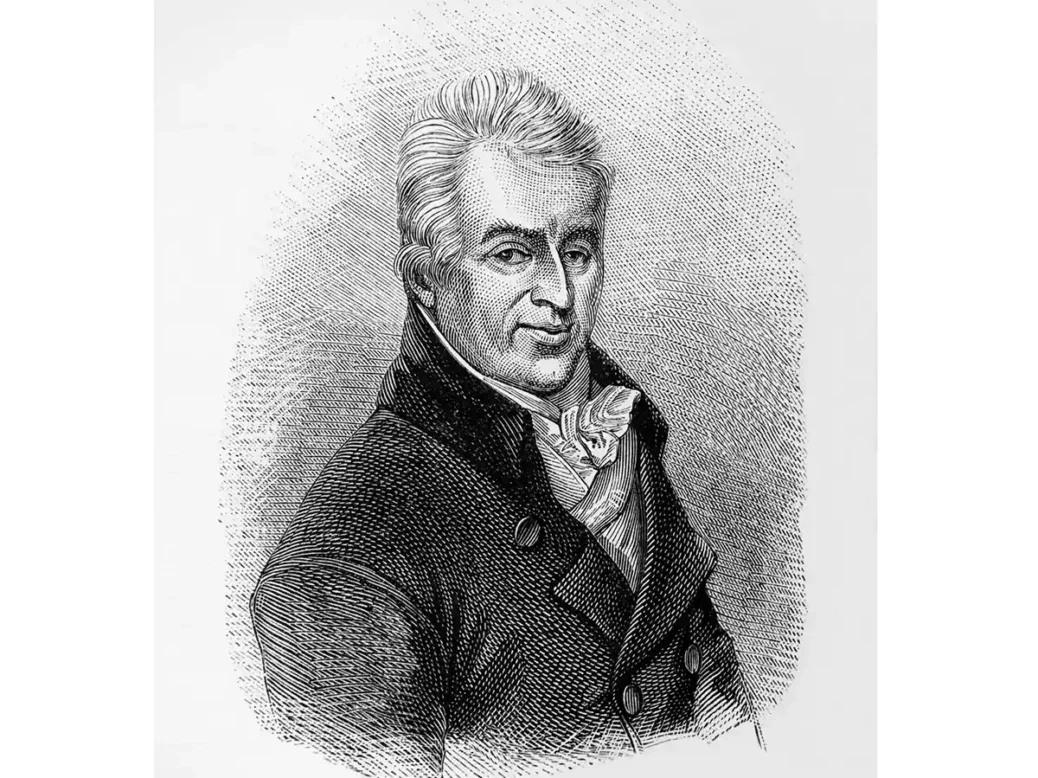
Rod Phillips retraces the steps of the English agricultural reformer Arthur Young on the eve of the French Revolution.
Just before the French Revolution broke out in 1789 and during its opening months, the English agricultural reformer Arthur Young (1741–1820) made three journeys through many of France’s wine regions. His aim was to assess the state of the country’s agriculture, of which viticulture was a valuable part. Not only did he ride through the countryside and see the cereals, fruit trees, and grapevines growing, he visited many nobles and other large landowners to discuss farming, he walked through their estates and vineyards, and he occasionally chatted to peasants. Throughout his voyages, he drank wine with his meals and commented on its quality.
Like many modern wine enthusiasts who travel through wine regions but are eager to differentiate themselves from common tourists, Young wrote that he did not want “to run idly through the kingdom with the herd of travelers, but to make myself a master of their agriculture.” His published account of these journeys provides fascinating insights into French viticulture and wine in the late 1700s.1
All three of Young’s journeys took place during the growing season and the harvest. The first, from May to November 1787, saw him travel to the southwest, Bordeaux, and the Loire Valley, then visiting Paris before returning to England. His second journey, from July to October the following year, took him to Normandy, Brittany, and the Loire Valley. His third, an eight-month journey that began in early June 1789 and ended in late January 1790, coincided with the outbreak of the French Revolution in July 1789. On that occasion, he traveled through eastern France—mainly Alsace, Burgundy, Auvergne, and Provence—and he also visited parts of northern Italy before spending a month in Paris.
On this third trip, Young was preoccupied by the French Revolution, and his diary is filled with the events he witnessed and conversations he had. He sometimes had difficulty traveling without papers, and on more than one occasion he was suspected of being a counter-Revolutionary. After he spent one day in August 1789 examining crops in fields near Fix-St-Geneys (Auvergne), a troop of soldiers came to his room at 11pm to accuse him of being an agent of Marie Antoinette. They believed he had been measuring their land so that their taxes could be increased. Throughout, Young continued to file reports on agriculture and wine.
It seems that Young, like many educated English people in the 18th century, read and spoke French well. He records many conversations with people in France, where speaking English was rare, though he admitted that his French was not perfect. Dealing with some poor people in eastern France, Young noted, “They speak such a jargon themselves, that their ears were not good enough to discover by my language that I was an undoubted foreigner” (p.168).
An acute, eccentric, and often grumpy observer, Young documented the challenges he encountered as he traveled. It’s just as well he missed social media by a couple of centuries; while he was complimentary about many aspects of his journeys, it’s easy to imagine Young responding to requests from Tripadvisor or Yelp to “tell us about your experience” with one star out of ten for lumpy beds, ill-furnished rooms, indescribably dirty toilets, poor food for himself and his horse, deplorable service—and mediocre wine.
Young’s general view of France was that of a patriotic Englishman. His account of his travels opened with a description of the English Channel as “the strait that separates England, so fortunately for her, from all the rest of the world.” He marveled that every time he landed in France, he was struck by “the sudden and universal” differences from England: “the scene, the people, the language, every object is new” (p.3).
Novelty was one thing, but this first voyage began inauspiciously. Young had forwarded his trunk from Calais to his inn in Paris, but when he arrived there, it was nowhere to be found, and he had to spend his only day in the city buying replacement “necessaries.” And although Young had planned to ride his own horse throughout his travels, the animal he brought on this first journey soon fell ill—he blamed French stables, which he described as “covered dung-hills”—and he was forced to resort to hiring carriages and later acquiring a new horse.
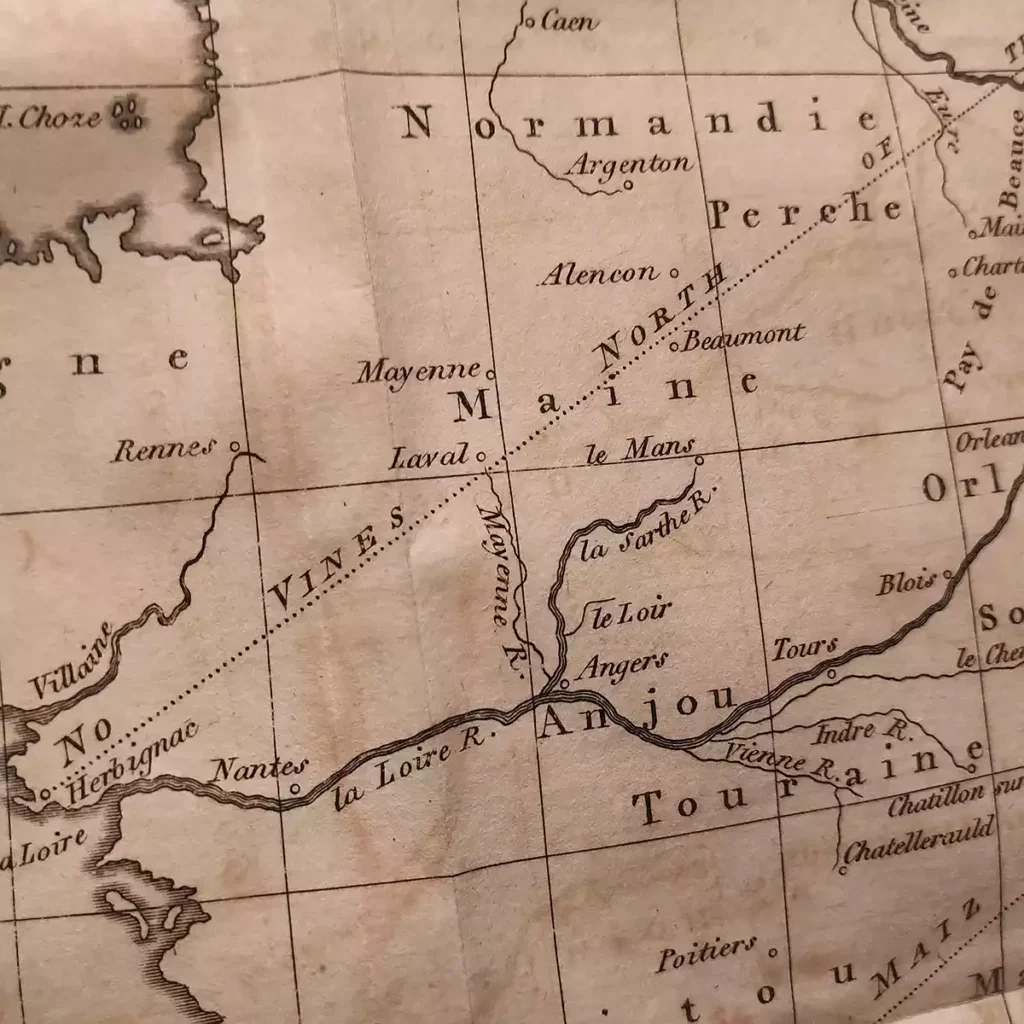
How Arthur Young became captivated by Cahors
French wine (at least at first) did little to make up for these inconveniences. On only his second day, he wrote, “For the first time I met with that wine of whose ill fame I had heard so much in England, that of being worse than small beer” (p.9). This was at dinner in Bernay-en-Ponthieu, a town near the English Channel, not far from Calais. The area’s wines had long suffered from a poor reputation, and it was among the first French wine districts to disappear during the 19th century.
Quite what was wrong with this wine, Young did not say, but the fact that this part of Picardy is so far north—without the benefit of climate change, at that time—made it difficult to ripen grapes. This should not have surprised Young. One of the fold-out maps in his book, “A New Map of the Climate and Navigation of France,” showed the main agricultural regions. One line, running east from Nantes and north of the Loire River, Paris, and Alsace, bears the notation, “No vines north of this line.” Picardy, where Young tasted the wine of “ill fame,” was indeed north of the line, and we should probably understand “no vines” as meaning “no vines that produce acceptable wine.”
Once Young reached more established regions, the wine improved. At Vatan, near Bourges in the Loire Valley, he drank “excellent Sancerre wine, of a deep color, rich flavor, and good body, 20 sous a bottle; but in the country 10 (p.13).” At Perpignan, later in his voyage, he tasted wine from Rivesaltes, where, he was told, “some of the most famous wine in France” was made. “At dinner,” he wrote, “I found that it merited its reputation” (p.30). At Lodève, “a dirty, ugly, ill-built town” in the Hérault, Young drank “excellent light and pleasing white wine, at 5 sous a bottle” (p.37), and at Langon, near Bordeaux, he drank its “excellent white wine” (p.45).
But it was at Cahors that Young found wines to rave about: “The true vin de Cahors, which has a great reputation, is the produce of a range of vineyards, very rocky, on a ridge of hills full to the south, and is called Vin de Grave, because growing on a gravelly soil […]. We drank it at the Trois Rois from three to ten years old, the latter at 30 sous [one shilling three pence] the bottle; both excellent, full bodied, great spirit, without being fiery, and to my palate much better than our ports” (p.19).
Although he drew attention to the gravelly soils, Young attributed the character of the wine to the climate: “The heat of this country is equal to the production of strong wine. This was the most burning day we had experienced” (p.19). Even so, the heat bothered him throughout his first trip, most of which took place during the summer. In the south of France in August 1787, an extended period of high temperatures “makes any exercise most uncomfortable […]. Give me the cold and fogs of England, rather than such a heat” (p.40).
Young liked the Cahors wine so much that he arranged for the innkeeper to ship him a barrel, but when it arrived in England, it was in poor condition. “Whether he sent bad wine, which I am not willing to believe, or that it came through bad hands, I do not know. It is however so bad as to be item for folly” (p.19). It’s not clear if the wine he ordered was a recent or older vintage, but at a time where most wine was unstable, three years was quite old, and ten years was really pushing it.
Despite this, Young summed up the wines on the first phase of his 1787 trip positively: “We have sometimes met with bad wine, but upon the whole, far better than such port as English inns give” (p.23). It was an interesting observation, given that Port had replaced claret as the dominant wine on the English wine market during the 18th century.
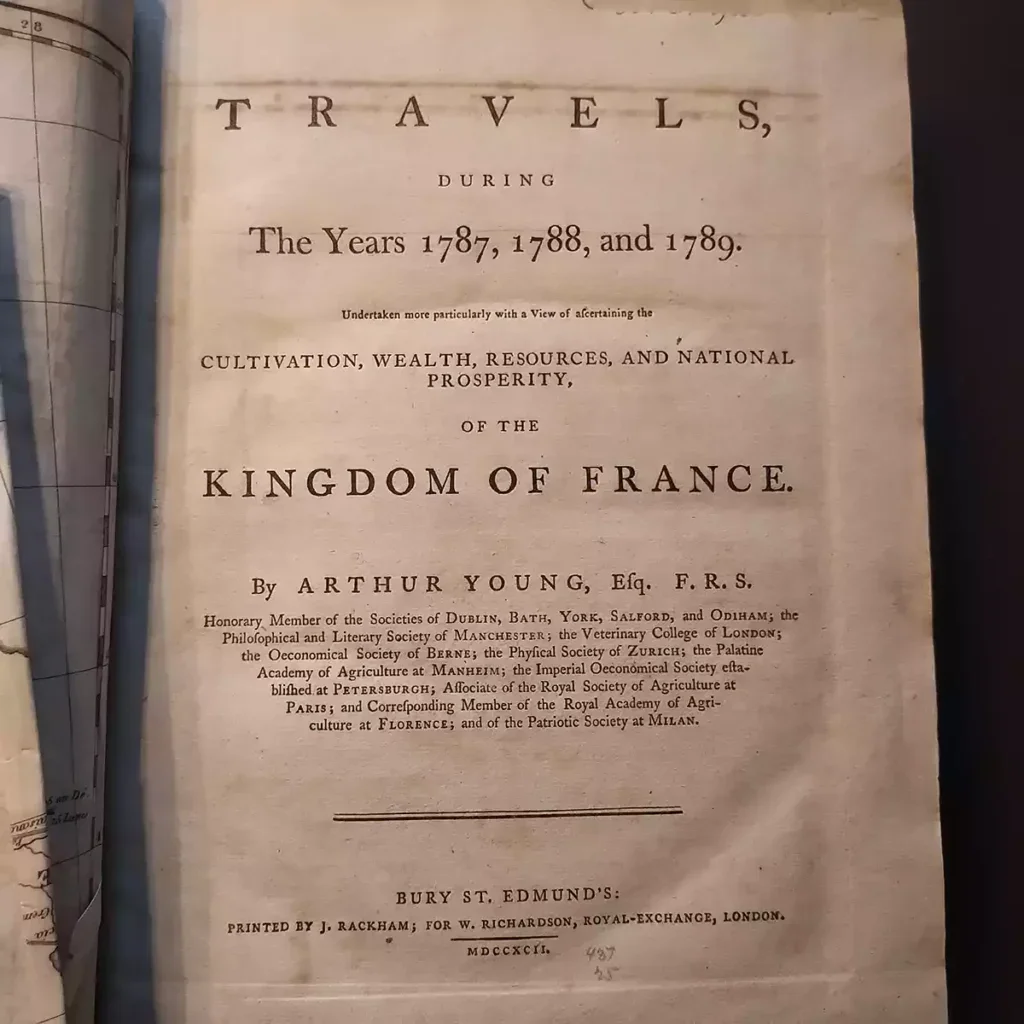
Ignoring the classics and pondering quality
Arthur Young’s 1788 journey began as inauspiciously as his first. Before leaving England, he had noticed that his horse was going blind, but he had been assured that he had 12 months before the mare lost her sight completely. No sooner had he started his travels in France, he saw that she was nearly blind, and he wrote that he was taking his life in his hands, riding her in that state. But she served him well, and Young was so appreciative that, rather than leave her behind when he left France, he took her with him to live out her life on his farm (p.100).
It is intriguing that Young did not comment on the wines in some regions that were most notable at the time. In Bordeaux, for example, he wrote at length on the buildings, the quay, and the theater, and he commented positively on the inns, but there was no mention of the wines he drank. It was the same in the Loire Valley, where Young was enthralled by the river and some of the towns but made no mention of the wines, apart from one from Sancerre. Similarly, he ignored the wines of Burgundy. As he drove from Dijon to Beaune, he noted “a range of hills to the right under vines” (p.154). This was clearly the Côte d’Or, yet Young made no mention of the wines he drank in either town. But then, he was there in July 1789, and his conversations were mainly about the Revolution in Paris.
Quite possibly, Young had intended to return to France for another journey but was dissuaded from doing so by the Revolution. He wrote several times in 1789 that he would have liked to buy a farm in France but that he was deterred by the thought that there might soon be a civil war. The fact that France and Britain were at war from 1792 to 1815 would have prevented any further trips.
As an agronomist, Young was interested in the ways vines were grown in France, and he observed several methods. This was a period of experimentation in vineyards, as they evolved from random plantings by provignage, to the rows that would become the rule after phylloxera. Young wrote that in Barsac (“famous also for its wines”), vines were already in rows: “They are now ploughing with oxen between the rows of vines” (p.45).
This was clearly worthy of mention, because planting vines in rows appears to have been rare at this time. Near Epernay, in Champagne, “Vines are planted promiscuously, three or four feet or two and a half feet from each other” (p.383). In the countryside around Toulouse, Young noted that there were maple trees, “with vines, trained in festoons, from tree to tree; they are conducted by a rope of bramble, vine cutting, or willow.” But this way of training vines was not particularly successful: “They give many grapes, but make bad wine,” Young wrote (p.22).
Meanwhile, at Béziers, Young examined the vineyard of Abbé Rozier, the author of several important French works on agriculture. Rozier had planted “a vineyard of Burgundy grapes […] in a new manner; he set them in a curved form, in a foss [ditch], covering them only with flints, instead of earth; this succeeded well” (p.32). Young deplored that fact that Rozier had left the country in protest at the bishop of Béziers’s building a road across his land so that the bishop had rapid access to his mistress.
Outside Sauve, a town near Nîmes, Young noted grapevines growing amid other crops—the biodiversity that is now becoming more popular: “Every man has an olive, a mulberry, and almond or a peach tree, and vines scattered among them; so that the whole ground is covered with the oddest mixture of these plants” (p.36). While Young found this odd, it appears to have been common in many regions, even in Burgundy, where the vineyards were probably the most disciplined in France. In Picardy, Young himself had seen land planted with “a piece of wheat; a scrap of lucerne; a patch of clover or vetches; a bit of vines; with cherry and other fruit trees scattered among all” (p.7).
In some places, Young was impressed by the sheer extent of vineyards. In September 1787, he noted near Chambord, in the Loire Valley, “The quantity of vines is very great; they have them very flourishing on a flat poor blowing sand. How well satisfied would be my friend Le Blanc if his poorest sands at Cavenham gave him 100 dozen of good wine per acre per annum! See at one coup d’oeil 2000 acres of them” (p.53). Near Nantes, he wrote, the countryside was “covered with vines” (p.91).
Yet the extent of France’s vineyards did not translate into wealth for their owners. At a dinner in Rouen with wool merchants, Young noted a theme he returned to several times: that most vignerons were poor. “Every person at table agreed,” he wrote, “that the wine provinces are the poorest in all France” (p.96). Young himself later noted that in Champagne “the idea of poverty attending vines, is here as strong as in any other part of France; the little and poor proprietors are all in misery” (p.385). This was something he didn’t understand, because it was clear that the return on vineyard land was greater, per acre, than on land planted to any other crops. But his table-fellows in Rouen insisted that the regions planted to vines were the poorest, and “they adhered to the fact as one generally known and admitted” (pp.96–97).
Young concluded that there were several structural problems in the French wine industry, if we can call it an industry at the time. The first was the sheer volatility of harvests. “Corn land and meadows have their bad and their good years, but they always yield something […] With vines, the difference is enormous; this year they yield nothing, in another, perhaps, casks are wanted to contain the exuberant produce of the vintage; now the price is extravagantly high; and again so low, so as to menace with poverty all who are concerned in it” (p.381).
These extremes were especially hard on the small-scale vignerons who made the bulk of France’s wine. While well-capitalized wine producers (including monasteries, though Young didn’t mention them) were able to ride out a bad or failed harvest, “to the poor proprietor, who lives from hand to mouth, it is fatal; he cannot see half a year’s labor lost by hail, frost, cold, or other inclemencies of the season, without seeing, at the same time, his children in want of bread” (p.390).
Other challenges faced by peasant vignerons included having to pay to use their seigneur’s wine press and to wait until the seigneur’s grapes were pressed first. Referring to blanc de noirs wines in Champagne, Young noted that the delay in pressing their grapes meant that “their wine is sometimes so damaged, that what would have been white [wine] becomes red” (p.384). In addition, the need for money forced small producers to sell their wine immediately, when there was a lot of wine on the market and prices were low, rather than benefit from holding it back. The difference in profit between selling it immediately and waiting six months, Young wrote, was “exceedingly great.”
Young also thought the French wine industry was overtaxed—a conclusion modern producers would appreciate. The tithe, a tax imposed by the Church, was a heavy burden, and then there were taxes imposed by the state, by towns, and cities as wine passed through their gates, and the various charges imposed by everyone who handled the wine between vineyard and consumer.
Young also weighed in on the discussion of what made great wine, when there was a lot of discussion of viticulture and winemaking techniques. The quality of grapes was important, and in Champagne he noted “the attention paid in the choice of bunches, a circumstance to which much of the fine flavor of the wine is owing.” Selection there went as far as “freeing every bunch from each grape that is unsound” (p.383). This description of berry selection was a level of rigor quite different from the general practice in France at the time, when all grapes—unripe, ripe, and rotten—were used, so as to maximize production.
But Young added that wine quality in Champagne was due “as well as to the singularity of soil and climate” (p.383). As we have seen, Young thought that the warm climate of Cahors was important for wine there, and in Champagne he drew attention to the chalky soil. Climate, soil, and grape quality might all be important then, but Young the agronomist was cautious in his judgment: “It is impossible to discover, in the present state of knowledge and information, on what depends the extraordinary quality of the wine” (p.383).
Overall, despite some disappointments, Young was impressed by the French wine he tasted. He raved about Cahors and was enthusiastic about Champagne. At Eperney in early July 1789, he was served “an excellent vin mousseux” and “drank prosperity to true liberty in France.” Young noted that as an added benefit, the sparkling wine “has absolutely banished” his rheumatism (p.132–33).
Young was particularly pleased to be drinking Champagne. Although he must have been a man of some means in order to take time from his farm to travel for months at a time and in order to contemplate buying an estate in France, Young portrayed himself as a modest farmer. “What a pretty supposition that a farmer in England should presume to drink champagne, even in idea!—the world must be turned topsy-turvy before a bottle of it can even be on my table” (p.384).
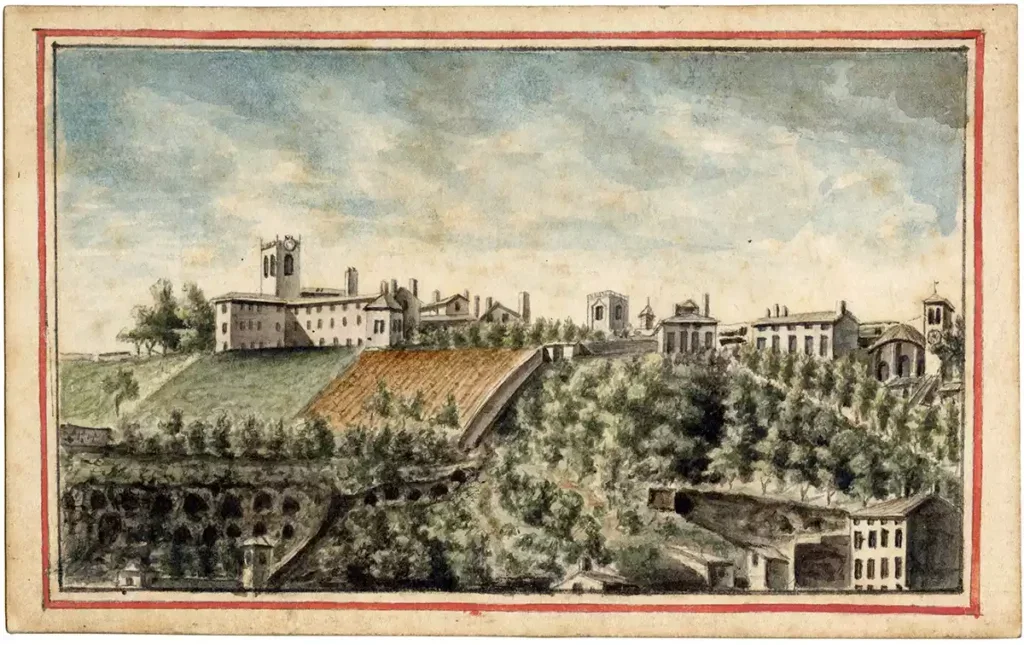
An unusually independent, open-minded wine lover
Although Champagne was clearly not often on Arthur Young’s table as he traveled around France, there was always wine. At Grande Maison in Rennes, for example, he had a good supper with a joint of mutton. A meal with the “common” wine is 40 sous, “and for 20 sous more you can have very good wine, instead of the ordinary sort” (p.84). At Musliac, also in Brittany, dinner comprised “two good flat fish, a dish of oysters, soup, a fine duck roasted; with an ample dessert of grapes, pears, walnuts, biscuits, liqueur and a pint of good Bordeaux wine” (p.87). In Fix-St-Geneys, in Auvergne, he was given a bottle of “excellent vin blanc mousseux” that was made in the locality.
Not all the wine was to his taste, though. At a village in Languedoc, the innkeeper provided him with a large loaf of bread (which he shared with his horse, since there was no hay or straw) but “no meat, no eggs, no legumes, and execrable wine” (p.37). In Fréjus, “after starving all day, they had nothing but stale eggs, bad bread, and worse wine,” while in St Tropez, “I breakfasted on grapes, rye bread, and bad wine” (pp.184–85).
In nearly all Young’s descriptions of the meals he took at inns, there was a bottle of wine—excellent, good, bad, or worse. He was keen to disabuse any English people who “imagine the sobriety of a French table carried to such a length, that one or two glasses of wine are all that a man can get at dinner; this is an error” (p.277). The surprising implication is that the English thought the French to be very moderate drinkers—and this at a time when the French upper classes were thought of as decadent.
In refuting this notion, Young made an equally surprising assertion: that at private dinners, at least, ordinary wine was diluted with water. “Your servant mixes the wine and water in what proportion you please; and large bowls of clean glasses are set before the master of the house, and some friends of the family, at different parts of the table, for serving the richer and rarer sorts of wines, which are drunk in this manner freely enough” (p.277).
As far as wine was concerned, there is this to be said for Arthur Young: He thought wine was a good thing. “There is a common idea,” he wrote, “that wine is not a wholesome beverage. I take this to be a vulgar error.” If wine were kept too long, when it became “sharp and acid,” it might be unwholesome. But if people are forced through poverty to drink bad wine, “the complaint ought not to be that wine is unwholesome, but that bad government is unwholesome” (p.389). He added that there was “more strength and vigor” among the common people of England than of France, but “it proves nothing against wine” (p.389).
A supporter of French wine, then, he had his own ideas about it and why vignerons were an impoverished class: government. It was the fault of the government that people were taxed so heavily and were poor as a result, and the misery of vignerons as a class could be laid at the feet of government. “Government!” he wrote, “Again—all—all—is government” (p.135). It made Young sympathetic to the French Revolution at first, though outbreaks of violence later turned him against it.
Young was also more open-minded about French wine regions than many other wine-loving foreign travelers. By the late 18th century, there was a consensus on which French wines were the best. Champagne was generally praised, the same three or four estates in Bordeaux that topped the 1855 Classification had been singled out since the 1600s, and a few Burgundy domaines—such as Le Clos Vougeot and La Romanée—were regularly cited. Writers repeated the canon until it became an orthodoxy that persists today.
Young, on the other hand, visited not only the highly reputed regions but also the less known. He had introductions to nobles and important families, he dined at their tables and drank from their cellars. But he also stayed at ordinary inns, dined at their tables-d’hôte with random other travelers, and drank whatever wine was on offer. We can’t know how to judge Young’s palate, but he reached his assessments by tasting wines and did not simply echo the assessments of others. It makes him, in many ways, a much more interesting observer of wine than most of his contemporaries. ▉
Note
1. The title page of Arthur Young’s Travels, During the Years 1787, 1788, and 1789. Undertaken More particularly with a View of Ascertaining the Cultivation, Wealth, Resources, and National Prosperity, of the Kingdom of France (W Richardson, Bury St Edmunds; 1792). Numbers in parentheses in this article refer to this volume, in the author’s possession. Spelling in quotations has been modernized when necessary for clarity.

